Related Research Articles
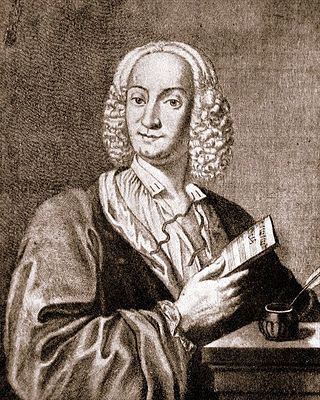
The Four Seasons is a group of four violin concerti by Italian composer Antonio Vivaldi, each of which gives musical expression to a season of the year. These were composed around 1718–1720, when Vivaldi was the court chapel master in Mantua. They were published in 1725 in Amsterdam, together with eight additional concerti, as Il cimento dell'armonia e dell'inventione.

William Howard Schuman was an American composer and arts administrator.
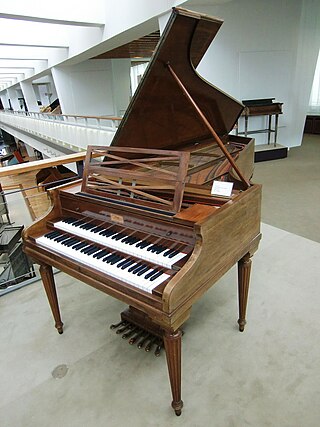
Concert champêtre, FP 49, is a harpsichord concerto by Francis Poulenc, which also exists in a version for piano solo with very slight changes in the solo part.

Appalachian Spring is an American ballet created by the choreographer Martha Graham and the composer Aaron Copland, later arranged as an orchestral work. Commissioned by Elizabeth Sprague Coolidge, Copland composed the ballet music for Graham; the original choreography was by Graham, with costumes by Edythe Gilfond and sets by Isamu Noguchi. The ballet was well received at the 1944 premiere, earning Copland the Pulitzer Prize for Music during its 1945 United States tour. The orchestral suite composed in 1945 was played that year by many symphony orchestras; the suite is among Copland's best-known works, and the ballet remains essential in the Martha Graham Dance Company repertoire.
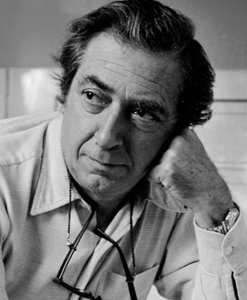
Norman Dello Joio was an American composer active for over half a century. He won a Pulitzer Prize in 1957.
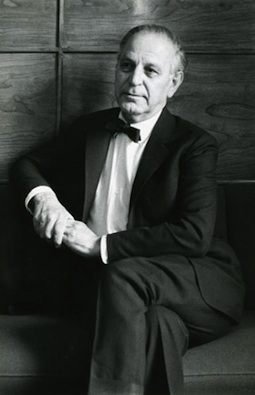
Ulvi Cemal Erkin was a member of the pioneer group of symphonic composers in Turkey, born in the period 1904–1910, who later came to be called The Turkish Five. These composers set out the direction of music in the newly established Turkish Republic. These composers distinguished themselves with their use of Turkish folk music and modal elements in an entirely Western symphonic style.
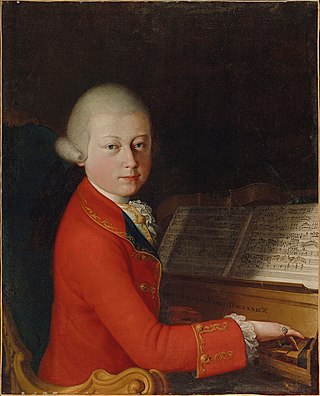
Wolfgang Amadeus Mozart's Violin Concerto No. 1 in B♭ major, K. 207, once was supposed to have been composed in 1775, along with the other four wholly authentic violin concertos. However, analysis of handwriting and the manuscript paper on which the concerto was written suggest that the date of composition might have been 1773. It has the usual fast–slow–fast structure.
Capricorn Concerto, Op. 21, is a composition for flute, oboe, trumpet, and strings by Samuel Barber, completed on September 8, 1944. A typical performance lasts approximately 14 minutes.
Chant du Rossignol, as it was published in 1921, is a poème symphonique by Igor Stravinsky adapted in 1917 from his 1914 opera The Nightingale.
An organ concerto is an orchestral piece of music in which a pipe organ soloist is accompanied by an an orchestra, although some works exist with the name "concerto" which are for organ alone.
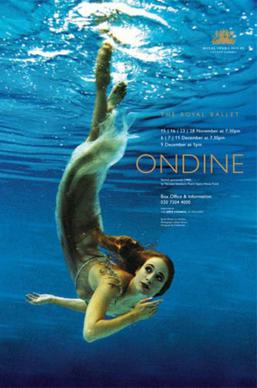
Ondine is a ballet in three acts created by the choreographer Sir Frederick Ashton and composer Hans Werner Henze. Ashton originally produced Ondine for the Royal Ballet in 1958, with Henze commissioned to produce the original score, published as Undine, which has since been restaged by other choreographers. The ballet was adapted from a novella titled Undine by Friedrich de la Motte Fouqué and it tells the tale of a water nymph who is the object of desire of a young prince named Palemon. The première of the ballet took place at the Royal Opera House, London, on 27 October 1958, with the composer as guest conductor. The first major revival of this Ashton/Henze production took place in 1988.
The American composer Elliott Carter wrote his clarinet concerto in 1996 to celebrate the 20th anniversary of the Ensemble InterContemporain, who premiered the work in January 1997 under the direction of Pierre Boulez. Alain Damiens was the soloist in this performance; his premiere recording of the work with the Ensemble InterContemporain under David Robertson was released in 1999. The concerto lasts just under 20 minutes and is in seven movements which play without a break:
- Scherzando
- Deciso
- Tranquillo
- Presto
- Largo
- Giocoso
- Agitato
The Symphony No. 5 by Walter Piston was composed in 1954.
The Concerto for Horn and Strings is a concerto for horn and string orchestra in three movements by the English composer Gordon Jacob. The work was composed in 1951 for soloist Dennis Brain and premiered on 8 May 1951, with Jacob conducting the Riddick String Orchestra in Wigmore Hall, London. The piece has been regarded as one of the most popular horn concertos of the 20th century.

The Cello Concerto, Op. 27, is a concerto for cello and orchestra by Graham Waterhouse, composed in 1990. It was first performed in 1995 in Toluca and Mexico City with the composer as the soloist, and published by Friedrich Hofmeister Musikverlag in Leipzig in 2000.
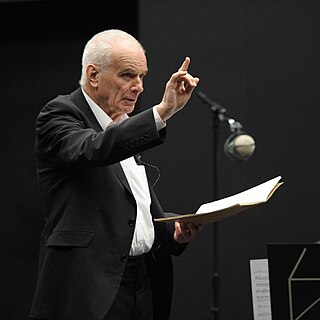
The Concerto for Trumpet and Orchestra is a composition for trumpet solo and orchestra by the British composer Peter Maxwell Davies. The work was commissioned by the Philharmonia Orchestra for its then principal trumpeter John Wallace. It was given its world premiere by Wallace and the Philharmonia Orchestra under the conductor Giuseppe Sinopoli in Hiroshima on 21 September 1988.
Aubade, a choreographic concerto for piano and 18 instruments, is a work of Francis Poulenc premiered in 1929. It was conceived as a ballet, but is more often played as a chamber piano concerto.
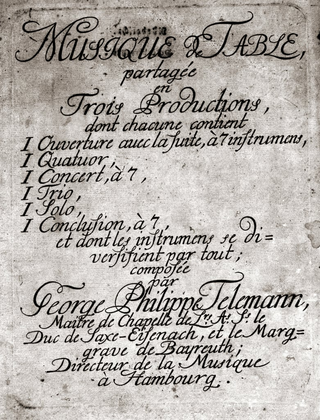
Tafelmusik is a collection of instrumental compositions by Georg Philipp Telemann (1681–1767), published in 1733. The original title is Musique de table. The work is one of Telemann's most widely known compositions; it is the climax and at the same time one of the last examples of courtly table music.
The Piano Concerto in A minor by Ottorino Respighi is a concerto for piano and orchestra written in 1902 and published in 1941. The work takes around 20 minutes to perform.
References
- 1 2 Freedman, Russell (1998). Martha Graham: A Dancer's Life (1st ed.). Houghton Mifflin Harcourt. p. 108. ISBN 0395746558.
- 1 2 3 4 Belfy, Jeanne Marie (1991). ""Judith" and the Louisville Orchestra: The Rest of the Story". College Music Symposium. 31: 36–48. ISSN 0069-5696.
- 1 2 3 4 5 Franko, Mark. (2012). Martha Graham in Love and War: The Life in the Work. Oxford University Press. ISBN 9780199777662.
- ↑ "Judith: Choreographic Poem for Orchestra, William Schuman". Milliken Archive of Jewish Music. Retrieved 21 January 2016.
- 1 2 3 4 Dowling Long, Siobhán; Sawyer, John F.A. (September 3, 2015). The Bible in Music: A Dictionary of Songs, Works, and More. Rowman & Littlefield. p. 1269. ISBN 978-0810884526.
- ↑ "Judith (Choreographic Poem for Orchestra): I. Adagio". YouTube. Retrieved 21 January 2016.
- ↑ "Judith (Choreographic Poem for Orchestra): II. Moderato". YouTube. Retrieved 21 January 2016.
- ↑ "Judith (Choreographic Poem for Orchestra): III. Tranquillo". YouTube. Retrieved 21 January 2016.
- 1 2 "Theater set element from Judith (1950)". Walker Art Center. Retrieved 21 January 2016.
- ↑ "Judith (Choreographic Poem for Orchestra): IV. Presto". YouTube. Retrieved 21 January 2016.
- ↑ "Judith (Choreographic Poem for Orchestra): V. Andante - Coda". YouTube. Retrieved 21 January 2016.
- ↑ Hodes, Stuart (August 22, 2011). Part Real, Part Dream: Dancing with Martha Graham (3rd ed.). 69151: Concord ePress.
{{cite book}}: CS1 maint: location (link) - ↑ Adams, Doug; Apostolos-Cappadona, Diane (April 17, 2001). Art as Religious Studies (Paperback ed.). Wipf & Stock. p. 88. ISBN 1579106358.
- ↑ Dunning, Jennifer (October 26, 1987). "Dance: Graham Troupe In 'Judith' and 'Rite'". The New York Times. Retrieved 21 January 2016.
- ↑ Sabin, Robert (February 1950). "The Dance Concerto: Martha Graham and William Schuman Create a New Form for the Theatre". Dance Observer. XVII/1: 22.